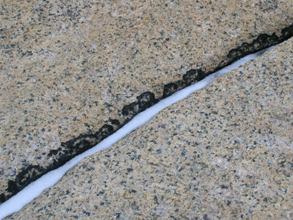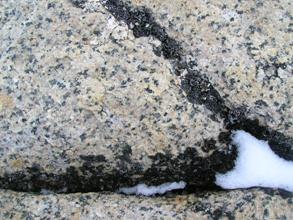

|
ANTAR-IMPACT |
 |
 |
Theme: The construction of the station "Princess Elisabeth" must respect the environmental protection rules which are the subject of the Protocol of Madrid (since 1991, an annex to the Antarctic Treaty). It requires the signatories to protect the environment during their activities in Antarctica, and to make an evaluation of their impacts. The adoption of this protocol was translated in a Belgian law that appeared in the Belgian Monitor on the 19th of May 2005. To comply with the protocol of Madrid, a draft 'Comprehensive Environmental Evaluation" (CEE) has been written in March 2007 for the construction of the new Belgian research station, and approuved at the ATCM XXX in New Delhi in May 2007. In Januari 2007, on the occasion of the BELARE expedition, Dr Damien Ertz (Belgian Botanical Garden, Meise) sampled the biology diversity on the site of the construction (Utsteinen Ridge and Nunatak). In addition, he carried out a cartography of the Ridge of Utsteinen, and made an inventory of the colony of snow petrels on Utsteinen Nunatak. This data was included in the draft CEE. These samples provide a valuable picture of the original biodiversity in this pristine environment and located in an aera remote from any other scientific station (min. 430 km). Objectives: The purpose of the project is to contribute to the evaluation of the impact of the construction and operation of the "Princess Elisabeth on the environment, particularly on the microbial biodiversity. The Project will provide the necessary baseline data on biodiversity (incl. microbial) that was present prior to the construction, thanks to the samples taken by Damien Ertz. The data will be available for immediate and long-term evaluation of the environmental impact of the Station. The results will be communicated to the Committee of Protecting the Environment (CEP), a body set up by the Madrid Protocol. Though the image of Antarctic biodiversity may evoke whales, pinguins, seals for many of us, in fact, the permanent residents of the Antarctic are microorganisms. Mammals and birds find their food in the sea, and spend only a part of the year in Antarctica. The reason for the underestimation of the importance of microorganisms is that their diversity is not easily accessible (it generally requires a microscopical observation) and therefore, is still largely unknown. However, we need baseline information, against which to compare the new data after some years. So far,
Damien Ertz has observed 4 species (so far unidentified) of bdelloid rotifer and two species of tardigrades. The green algae, Prasiola sp. was also observed in areas below the nests that may be nutrient enriched. Several terrestrial species of unicellular and filamentous cyanobacteria have been observed in the The study of microbial diversity is complex, because of the small size but also because the conventional methods of determination based on the morphology can not detect genetic variations. This has led taxonomists of these groups to use molecular methods based on sequences of DNA or genome fingerprints. Baseline data on biodiversity will contribute to define the status of the site before the construction of the Station. These 'biosensors' can be followed in the years following the construction of the Station, allowing for a long-term monitoring of its impact. In addition, the effects of other disturbances, such as global climatic changes, changing UV radiations, the possible arrival of new 'alien' species, etc could be followed. The elaboration of a baseline data (first, standardised Excel files) will be started, so that the data will be accessible and useful for a long term monitoring. With the "Princess ELisabeth" station, Belgian scientists have an unique opportunity to follow the impact of a station in a regio previously virgin of human impact. Indeed, most of the Antarctic stations were implanted many years before the protocol of Madrid became operational, so that we have no data on the original state of these sites. The ANTAR-IMPACT partners will write vulgarisation texts and guidelines explaining to the visitors of the Station the interest to protect the biodiversity (in particular the almost invisible microbial formations) and how to limit their activities' impact.
|